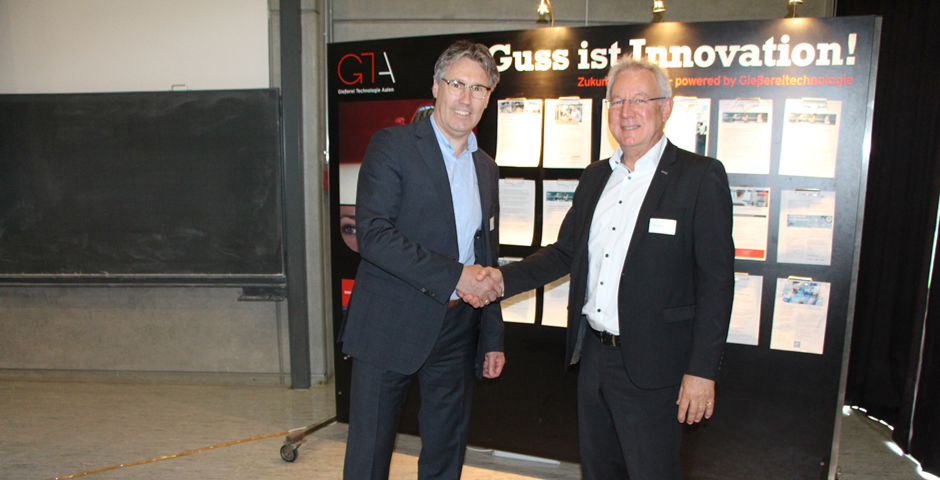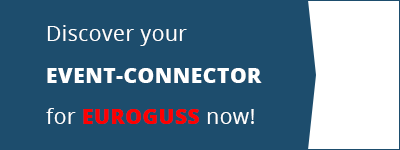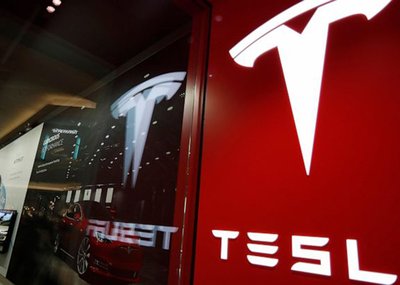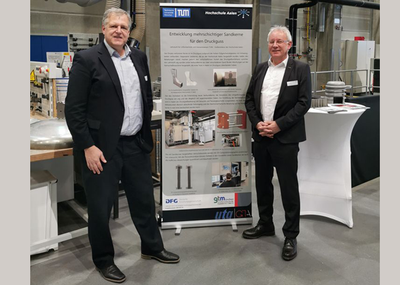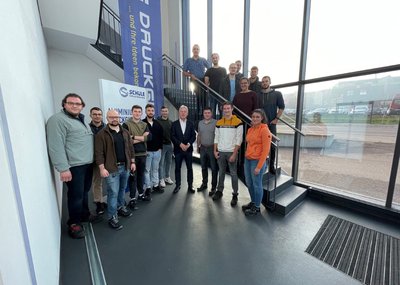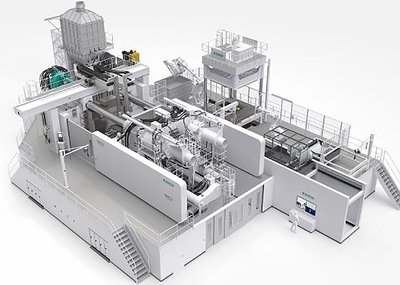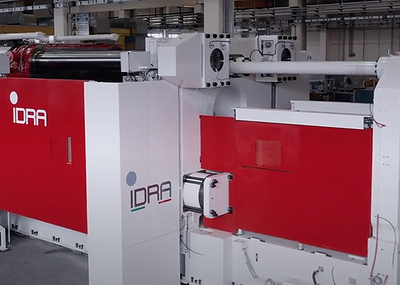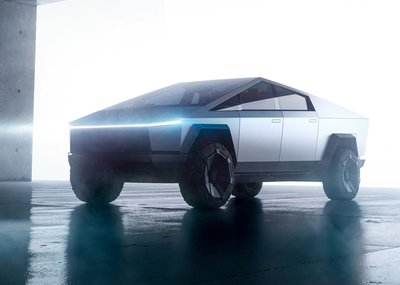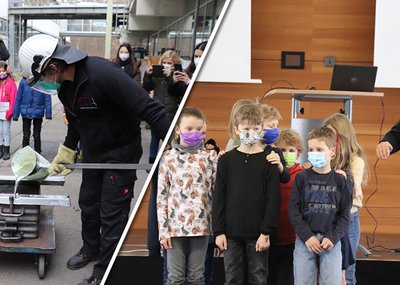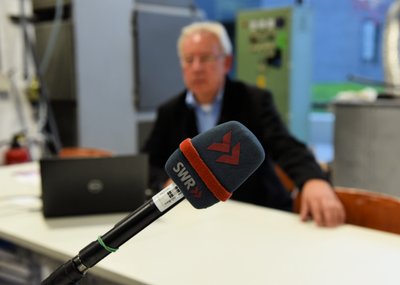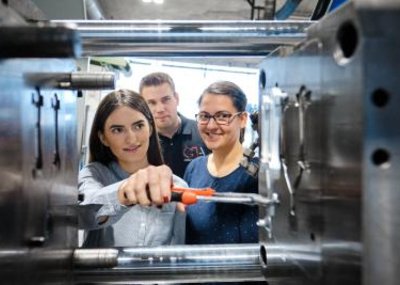Also this year, the university can maintain its top position in terms of research. According to the new funding atlas of the German Research Foundation DFG 2021, in which the key figures of the universities for publicly funded research are published, Aalen ranks first in Germany for R&D project funding by the federal government and second for DFG grants.
Furthermore, according to the CHE Ranking, Aalen is among the top 10 universities in the field of business administration and mechanical engineering in terms of teaching, and in the StudyCheck Award, Aalen is among the most popular universities in Germany with a recommendation rate of 96 percent.
Prof. Kallien then explained the great promotional impact of TESLA's activities in the field of large castings. He briefly introduced current and new R&D projects in the fields of application of AI in die casting, cyclic loading of zinc die casting, gas injection technology in die casting, and coating of zinc die casting. Kallien thanked not only the participants, but also the ten exhibitors who showed their innovative products to the trade audience in a table top exhibition.
Interesting lectures non-stop
This year's series of lectures was started by Christian Köhler from Volkswagen AG on the subject of "Recycling to achieve CO2 and cost targets in light metal foundries". In it, he presented the climate targets of the Volkswagen Group. Already in 2016, the first target to emit 25% less CO2 was achieved. In his presentation, he compared the annual CO2 emissions of a cow with those of a VW Polo: the cow emits as much CO2 as a Polo after driving 38,182 km. Converted into trees: to compensate for this, 160 beech trees would be needed for an average driving distance of 20,000km. For Volkswagen, it is clear that e-mobility is the means to achieve CO2 targets. The company continues to focus on closing its own material cycle and substituting fossil fuels.
Siegfried Schneider from castwerk GmbH & Co.KG gave a presentation on the topic of "Thixomolding: process-quality-energy balance". Similar to injection molding, the thixomolding machine is equipped with a plasticizing unit. Instead of plastic granules, Mg granules are used. As an advantage of this process, Mr. Schneider mentioned, among other things, a very good surface finish of the castings in addition to very good microstructures. However, the biggest advantages are the energy costs, the elimination of inert gas and the processability of AM50/AM60. To date, over 3 million parts have been produced and demand is increasing.
Dipl.-Ing. Hermann Roos of Bühler AG spoke on the topic of "The future of structural components in die casting." Mr. Roos explained that structural components are used in many areas. Bühler AG uses a two-platen die casting machine, which has the advantage of better distributing the stresses when the die is closed, which in turn leads to higher casting quality. He then presented in detail the new concept for large machines with a clamping force of 6000 metric tons and above. Thus, for shot weights up to more than 200kg, it is necessary to position the melting furnace directly to the machine. The large molds also require a twin sprayer system for release agent application.
The subsequent lecture "Innovative approaches for the preparation and processing of aluminum melts" was presented by Dr.-Ing. Thomas Franco from FRECH ZPF GmbH. He reported on innovative approaches such as chip-wheel recycling, the simulation of alternative fuel gas concepts with air preheating, and AI-resistant materials. He refuted the assumption that only hydrogen can be used for melting by showing the calorific value of natural gas and hydrogen in a direct comparison, whereby it was obvious that natural gas has a threefold higher calorific value.
Dr. Wolfram Stets from Foseco Nederland BV explained the subject of
"Impurities and inclusions in cast alloys: Effect, Measurement and Prevention." He distinguished here between exogenous -input from outside- and endogenous -emergence in the melt- impurities. In his presentation, he discussed the different causes and measurement methods for impurities in steel casting and aluminum casting. For the prevention of impurities, he mentioned the cleaning of melts by salts, low-turbulence metal transfer and casting, as well as filtration of the melt.
The day was rounded off by short presentations by the exhibitors.
The first day was rounded off by the traditional Founders' Evening, at which there is a lively exchange of experience between the foundrymen and also the students every year.
The next morning, Frank Neumann started with the presentation of the German Zinc Casting Award of the Initiative Zink e.V.: in the category of security and locking technology, he presented a door locking system from the company Groß Druckguss GmbH. In the Lifestyle category, the winner was a turn signal from Siegfried Müller Druckguss GmbH, while in Medical Technology the winner was a central carrier unit for electronic, mechanical and optical components in the dental sector from Kaspar Schlüter GmbH & Co. KG. In electrical engineering and mechanical engineering, a housing from Adolf Föhl GmbH succeeded in combining thinness and stability. In sanitary engineering, a shower head from HDO Druckguss und Oberflächentechnik stood out. The company HDO Druckguss und Oberflächentechnik won in the category mobility with a radio key.
Dipl.-Ing. Christoph Schendera of EFM e.V. presented the winners of the Magnesium Award, which was supported by the German Foundry Industry Association (BDG), the German Aluminium Industry Association (GDA) and the European Research Association for Magnesium (EFM): Third place went to Dynacast for a painting unit for a coffee machine. The component was made of magnesium instead of plastic. Torun Bark Magnesium GmbH was runner-up with its table top for a circular saw. GF Casting Solutions AG was the winner with a cross car beam. The integration of function and the utilization of the complete installation space were convincing here. Prof.-Dr. Lothar Kallien then presented the results in the zinc and aluminum die casting category. He first discussed the winners in the aluminum category. First place went to a one-piece upper shell of a rear axle beam made of die casting by Albert Handtmann GmbH. Second place was shared by Alupress AG and BMW Leichtmetallgießerei. Matthies Druckguss GmbH took third place with a housing with a 3D-printed mold core. The winners of the zinc category were then presented: First place went to Siegfried Müller GmbH for an assembly of 3 die cast parts, followed by a switch handle from HDO- Druckguss und Oberflächentechnik GmbH, and a clamping plate from Teilemacherei GmbH.
The topic "Innovation in hot-chamber die casting: hot runner, coating and climate neutrality" was presented by Thomas Herper from Adolf Föhl GmbH. By using a hot runner technology, he promises, among other things, the elimination or reduction of secondary work steps, cycle time reduction, energy efficiency and the elimination of recycled material. This technology is used especially for critically convertible geometries and walls of 0.3 mm. In addition, he presented the Föhlan nanocoating.
The subject of "Process optimization, management and logistics in foundries" was the topic of the presentation by Prof. Dr.-Ing. Sven Roeren of roeren Gmbh. He discussed a naïve run into e-mobility and warned against misconceptions regarding niche markets. "Niches are volatile, can crumble, and only pay off with high returns." He also criticized companies for allowing themselves to be forced into prices they would be better off not accepting. His final appeal to the audience was to recognize their own competencies and find the market that goes with them.
B. Eng. Andre Dylong from the company Druckguss Service Deutschland presented the topic
"Vertical casting using the DuoCast principle". The DuoCast principle is the casting of two components in one shot. Mold filling takes place vertically here. According to Dylong, this avoids air pockets because there is no air in front of the gate. It should also be possible to cast two different parts on one machine with two molds. The cycle time should be able to be reduced by 12 seconds with this principle compared to conventional casting. As disadvantages, he mentions that if one half of the machine fails, the other half also fails.
This concluded the technical presentations and was followed by the latest research results of Aalen University in the field of foundry technology. Prof. Dr.-Ing. Sebastian Feldmann started with the latest findings on the project "Artificial intelligence for the evaluation of casting defects". He explained that by correlating process data (shot curve) and evaluating the results of X-ray images, significant areas of the shot curve that lead to defects can be identified. X-ray images could be labeled via a mix of statistical and AI-based methods. He also said expert knowledge on defect classification could be mapped into the AI and defects such as porosity and cold run could be analyzed via a CNN. More defect sources will be implemented in the future and complex component geometries will also be analyzed.
B. Eng. Fabian Schnuse gave an overview of current research on the topic.
"Practical application of AI and zinc and aluminum die castings". The application of AI could detect defects with a certainty of 100%. Neural networks should be able to be trained by self-generated surface images. The classification works not only for the components with which is trained but also to a certain extent for arbitrary components and materials.
The presentation by Dr.-Ing. Marcel Becker, who moved to Frech in March after 10 years in the foundry laboratory, was about salt cores in die casting. First, Becker addressed salt materials, defining a flexural strength of at least 20MPa for his project. Next, he highlighted the thermophysical influences of salt cores in the die casting process. Here he pointed out the poor thermal conductivity of the salt core which has an influence on solidification. He succeeded in carrying out successful casting tests with a complex salt core geometry for an A-pillar. It was possible to recast the salt cores with a flow velocity of 60m/s due to the additionally introduced core supports. The results are summarized in his dissertation.
M.Sc. Daniel Schwarz gave a presentation on the topic "Multimaterial composites for hybrid lightweight construction". Here, CFRP blanks were recast with aluminum and magnesium. It turned out that significantly higher wall thicknesses can be cast around magnesium. He also presented a CFRP fiber-reinforced battery housing.
The presentation by Dipl. Ing. Thomas Weidler dealt with the subject of "Magweb fabric reinforcement magnesium die casting". Here, different fabrics were recast in the die casting process. An increase in the yield strength as a function of the commercial content was achieved.
M.Sc. Christos Mangos, the zinc die casting expert of the foundry laboratory, presented two new research projects at once: Hydrogen and the Galvanic Coatability of Zinc Die Castings, a follow-on project investigating blistering caused by hydrogen generated during cathodic degreasing, and "Zynk Casting," a new project investigating the cyclic properties of zinc die castings. Both projects are accompanied by an exceptionally large industry committee, which documents the great interest of industry in these topics.
The series of lectures was concluded by M.Sc. Florian Mäuser with the presentation of the project "Gas injection for the production of hollow component structures in die casting". The aim of the new project is to create hollow structures by gas injection in order to save material for weight reduction, or to form hollow channels. A new gas injection system was developed as part of an EU project. Components such as the electric motor housing with a hollow channel were successfully produced.
At the end of the Aalen Foundry Colloquium, a traditional Swabian lunch was served to the satisfaction of all participants: Maultaschen and potato salad.

